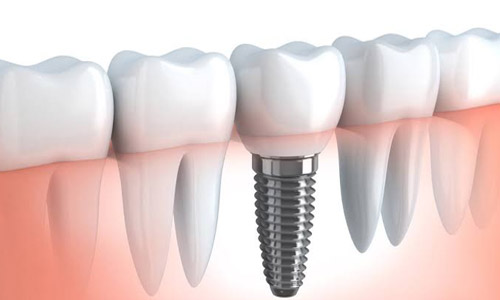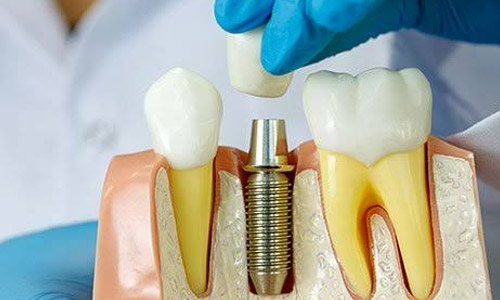An implant is a man made replacement for the natural tooth root which allows a person to return to non-removable teeth or a more secure dental restoration. In this procedure the adjacent tooth remains intact. There are several types of dental implants to suit our specific needs. Implants can be divided into two basic groups. One that is inserted into the bone and those that are placed over the bone. In both these instances implants are placed under the tissues and extend into the mouth.
Know Dental Implants
Dental Implants are metal screws placed into the jaw bone. They act as anchors for a set of false teeth. Dental Implants are today's best alternative to natural teeth. They are tooth replacements that allow you to function more normally than conventional dentures and bridges. They can be the foundation for greatly improved smiles and overall facial appearance.
Dental Implants are the best alternative to healthy natural teeth because they are a safe longlasting solution. Dental Implants can give back patients their confident smile and maximum comfort in biting. The benefits are improved esthetics, the ability to eat comfortably and a clean, healthy oral environment for the patient.
Dental Implants are small prosthetic posts that are placed into the bone of the upper or lower jaw. They act as replacements for the root portion of lost natural teeth and also serve as an anchor for replacement teeth. Teeth restored on Dental Implants look and feel exactly like natural teeth in fact, no-one (probably other than dentists) will be able to tell the difference. Dental Implants are appropriate for almost anyone who is currently missing teeth or is at risk of losing teeth.


Cost for Dental Implants
Similar to several surgical procedures, the fees for this procedure will differ from doctor to doctor. Each individual dentist carrying out this procedure will be able to quote you his fees. Always remember that there are three components to a tooth being reinstated by an implant dentist and there is individual fee structure for each component:
First, the cost comprises of the implant surgical procedure itself
Second, there is the cost of the post also known as abutment, which is placed on the healed implant
Finally, there is the cost of the crown, which is the tooth placed on top of the post
Apart from this there will some other costs as well which might be added later.
Recovery
The recovery from this procedure depends on several factors, one of which includes the several procedures needed to complete your treatment. However, it's usually noticed that once an implant has been placed, the patient needs to maintain meticulous oral hygiene habits for ensuring appropriate fusing of the implant and bone structure. If the patient takes proper care then an implant restoration can remain intact in place for more than 40 years. After the initial surgical procedure is completed, discomfort must be minimal. The patient's face and gums can tend to swell as well as there could be minor bleeding and bruising at the site of the implant. Your dentist would prescribe pain medications to relieve any pain or discomfort you feel after the procedure.
The time required from healing the surgical procedure to place the implants takes up to 6 months, whereas fitting and seating of the crown can take up to two months. This timeframe again depends on individual cases and treatments. You need to follow up with your dentist to monitor the progress.
